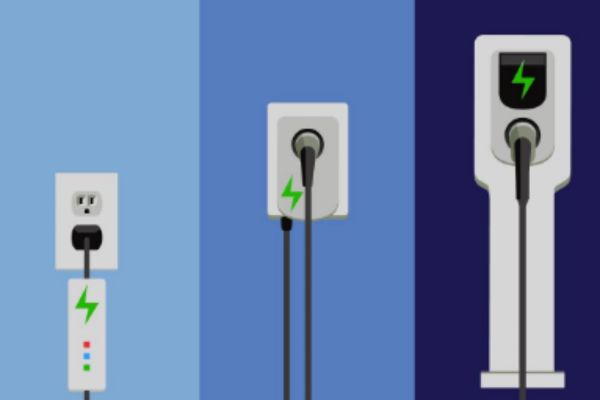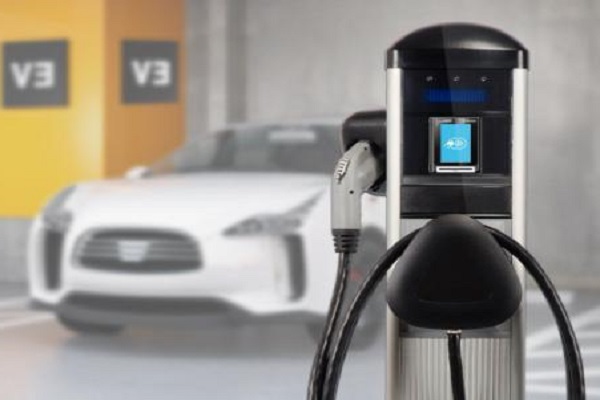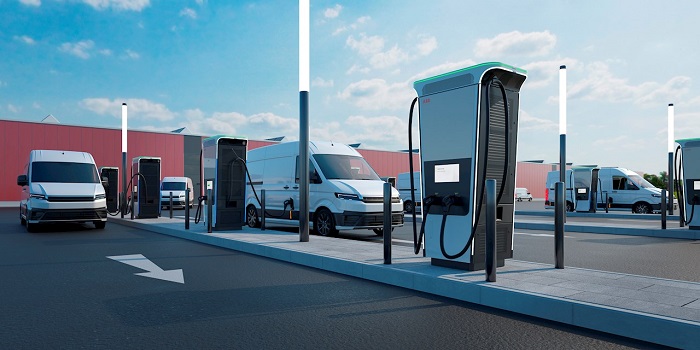Level 3 EV Charging Near Me
Level 3 EV charging, also referred to as DC fast charging, stands out as the swiftest charging solution offered for electric vehicles (EVs) accessible in the market. If you’re searching for “Level 3 EV Charging Near Me,” understanding the distinctions between Level 1, Level 2, and Level 3 charging can be pivotal. Let’s delve into an overview of Level 3 charging and its comparative advantages over Levels 1 and 2.
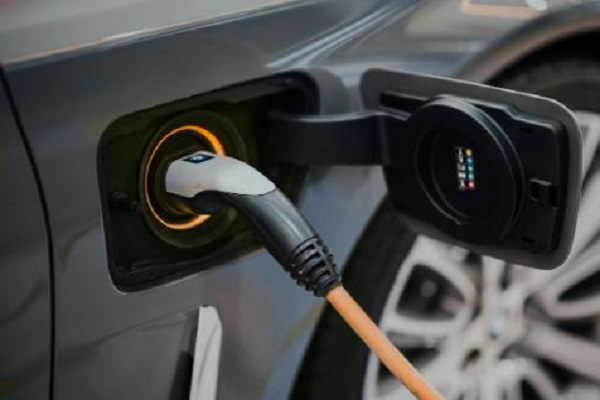
What is Level 3 EV Charging?
Level 3 EV charging, or DC fast charging, delivers high-powered electricity directly to an electric vehicle’s battery, bypassing the vehicle’s onboard charger. This allows for significantly faster charging times compared to Level 1 and Level 2 charging.
Comparison between Level 1, Level 2, and Level 3 Charging
- Level 1 Charging: This is the slowest form of charging and typically involves plugging an EV into a standard household outlet using the included charging cable. It’s convenient for overnight charging but can take many hours to fully charge an EV.
- Level 2 Charging: Level 2 charging involves using a 240-volt AC charging station, which can deliver power at a faster rate than Level 1 charging. It’s commonly found in public charging stations, workplaces, and some residential settings. Level 2 charging can fully charge most EVs in a matter of hours.
- Level 3 Charging (DC Fast Charging): Level 3 charging stations use direct current (DC) to rapidly charge EV batteries. These stations can charge an EV to 80% capacity in typically less than 30 minutes, making them ideal for long-distance travel or when quick charging is needed.
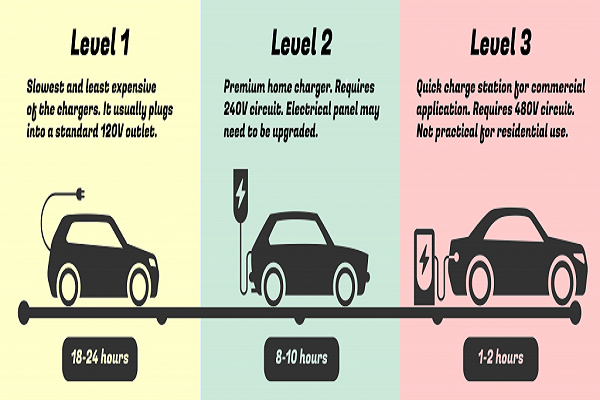
The Technology Behind Level 3 Charging
Level 3 charging stations are equipped with high-powered chargers and use direct current (DC) to charge EV batteries. They require specialized infrastructure and are typically found at dedicated charging stations along highways, major travel routes, or in urban areas.
Time Required for Level 3 Charging
The time required for Level 3 charging can vary depending on factors such as the capacity of the EV battery, the state of charge, and the specific charging station’s power output. However, Level 3 charging can typically provide an 80% charge in less than 30 minutes for most EVs.
Electric Vehicles Compatible with Level 3 Charging
Many modern electric vehicles are compatible with Level 3 charging, although compatibility can vary depending on the vehicle’s make and model. Most EV manufacturers offer at least one model that supports DC fast charging. Some popular EVs that are compatible with Level 3 charging include the Tesla Model 3, Nissan Leaf, Chevrolet Bolt EV, Audi e-tron, and Hyundai Kona Electric.
Now, if you’re looking for Level 3 EV charging stations near you, there are several ways to find them. You can use smartphone apps like PlugShare, ChargePoint, or the built-in navigation systems in some EVs to locate nearby charging stations. Additionally, major EV charging networks often provide online maps or smartphone apps that show the locations of their Level 3 charging stations. Simply input your location or route, and these tools will display the nearest Level 3 charging options.
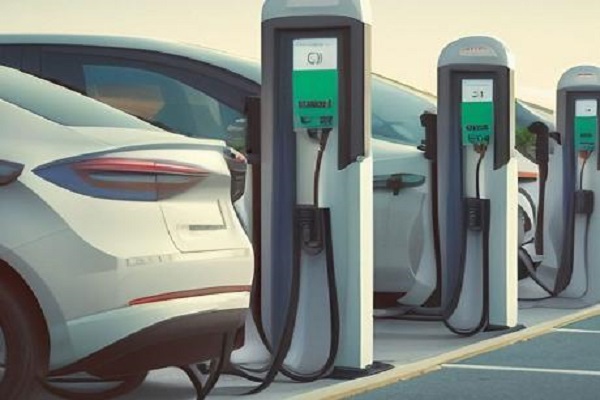
Finding Level 3 EV Charging Stations
Level 3 EV charging stations, also known as DC fast chargers, are the speed demons of the EV charging world. They can deliver a significant amount of charge in a relatively short time, making them ideal for long road trips or topping up your battery when you’re short on time. But with great power comes great responsibility (to find one!), so here’s how to locate these powerful stations:
Maps and Apps for Locating Level 3 Charging Stations
There are a number of apps and websites that can help you find Level 3 charging stations, including:
- PlugShare:This popular app allows you to search for charging stations by location, type (including Level 3), and availability. You can also see photos of the stations, user reviews, and real-time charging speeds.
- ChargePoint:The ChargePoint app lets you find stations, see real-time availability, and even start charging sessions remotely (with compatible stations).
- A Better Route Planner (ABRP):ABRP is a great tool for planning long road trips with an electric vehicle. It takes into account factors like elevation, temperature, and charging speeds to create a route that minimizes your charging time.
- Google Maps: While not as feature-rich as some of the dedicated EV charging apps, Google Maps can still be a helpful tool for finding Level 3 charging stations. Simply search for “EV charging stations” or “DC fast chargers” in your desired location.
Key Features to Look for in Level 3 Charging Station Finder Apps
When choosing a Level 3 charging station finder app, consider the following features:
- Search filters: The ability to filter stations by location, type (Level 3), availability, and connector type (CCS, CHAdeMO, etc.).
- Real-time availability: This lets you see if a station is currently in use before you head there.
- Charging speed: This will give you an estimate of how long it will take to charge your car at a particular station.
- User reviews: Reviews can provide valuable insights into the reliability and functionality of a station.
- Cost of charging: Some apps may show you the cost of charging at a particular station.
How to Use Smartphone Apps to Find Level 3 Charging Stations
Using a smartphone app to find Level 3 charging stations is easy. Here’s a general overview:
- Download and install a charging station finder app on your smartphone.
- Open the app and allow it to access your location.
- Search for “Level 3 charging stations” or “DC fast chargers” in your desired location.
- The app will display a list of stations in your area.
- You can tap on a station to see more information about it, including its address, real-time availability, charging speed, user reviews, and photos.
- Once you’ve found a station that meets your needs, simply follow the directions in the app to get there.
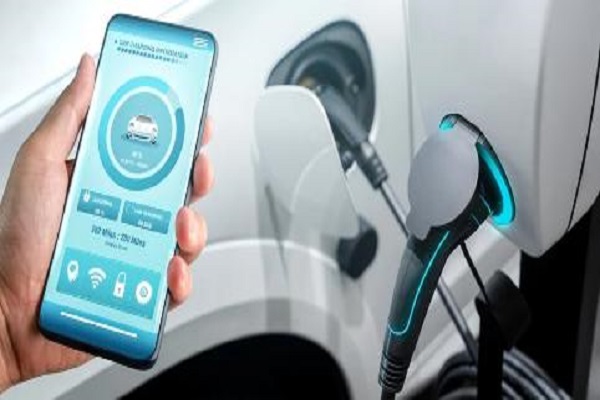
National and Regional Charging Networks with Level 3 Chargers
Several national and regional charging networks offer Level 3 charging stations, including:
- Tesla Supercharger Network:Tesla’s exclusive network of DC fast chargers is only available to Tesla vehicles. However, it is one of the most extensive and reliable Level 3 charging networks in the world.
- Electrify America:Electrify America is a major provider of Level 3 charging stations in the United States. They offer stations at highway rest stops, convenience stores, and other locations.
- EVgo:EVgo is another national provider of Level 3 charging stations in the United States. They offer stations in a variety of locations, including urban areas and highways.
- Greenlots:Greenlots is a charging network with a presence in several countries, including the United States, Canada, and the United Kingdom. They offer a mix of Level 2 and Level 3 charging stations.
User Ratings and Reviews of Charging Stations
User ratings and reviews can be a valuable resource when finding Level 3 charging stations. They can provide insights into the reliability of a station, the ease of use, and the overall experience. Be sure to read reviews before you head to a station, especially if it’s a new one or one that is located in an unfamiliar area.
Costs of Level 3 Charging
Fast charging convenience comes at a price, and understanding Level 3 charging costs can help you factor them into your budgeting and trip planning. Here’s a breakdown of what to expect:
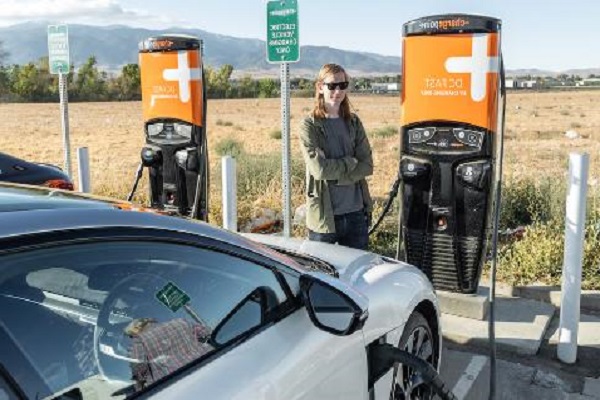
Pricing Structures for Level 3 Charging
There are two main ways that Level 3 charging stations can price their services:
- Per kilowatt-hour (kWh): This is the most common pricing structure. You’ll be charged a set rate for each kWh of electricity you use to charge your battery. Rates can vary depending on the location, charging network, and even time of day.
- Subscription fee + per kWh rate: Some charging networks offer a subscription plan that gives you discounted rates on charging. This can be a good option for frequent fast chargers, but be sure to do the math to see if it saves you money in the long run.
Membership vs. Pay-as-you-go Charging Costs
The cost of Level 3 charging can also vary depending on whether you choose to pay as you go or join a membership program. Here’s a quick comparison:
- Pay-as-you-go: This is the simplest option, but it’s often the most expensive. You’ll simply pay the per-kWh rate charged by the station.
- Membership: Some charging networks offer membership plans that can give you discounted rates on charging. This can be a good option if you plan on using Level 3 chargers frequently, but be sure to factor in the monthly membership fee when calculating your overall costs.
Calculating the Cost of Level 3 Charging for a Trip
To estimate the cost of Level 3 charging for a trip, you’ll need to consider the following factors:
- The size of your car’s battery: Larger batteries will take more kWh to charge, which will cost more.
- The efficiency of your car: More efficient cars will require less energy to travel the same distance, which will reduce your charging costs.
- The distance you’re traveling: The farther you travel, the more charging sessions you’ll need.
- The charging speed of the station: Level 3 chargers can vary in speed. Faster chargers can deliver more kWh in a shorter amount of time, but they may also be more expensive.
- The cost of electricity at the station: This can vary depending on the location and charging network.
Comparing Costs: Level 3 Charging vs. Home Charging
Level 3 charging is typically more expensive than charging your car at home. Home electricity rates are generally lower than those at public charging stations. Additionally, if you have a Level 2 charger installed at home, you’ll be able to charge your car much faster than with a standard Level 1 charger.
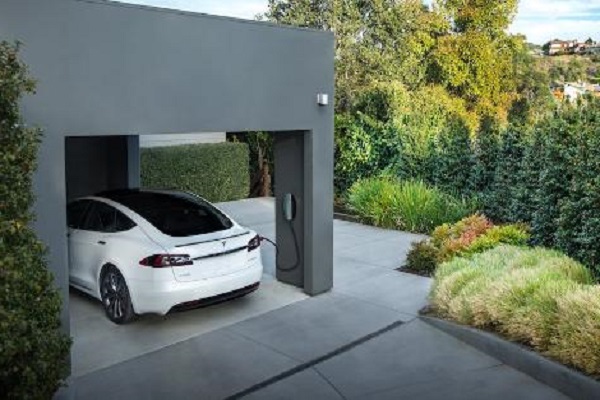
Government and Utility Incentives for EV Charging
Some governments and utilities offer incentives to help offset the cost of EV charging, including:
- Tax credits for installing home charging stations
- Rebates for purchasing an electric vehicle
- Discounted electricity rates for EV charging
Be sure to research what incentives are available in your area to help you save money on EV charging.

Henry Michael is a leading expert in EV charging station research, specializing in innovative solutions for electric vehicle infrastructure. With a passion for sustainability and technological advancement, he is dedicated to advancing the accessibility and efficiency of EV charging worldwide.


